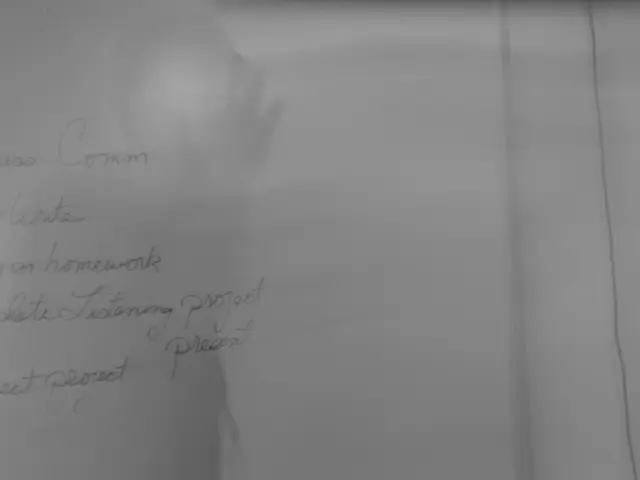1. Ten fascinating discoveries unveiled by close-up scrutiny with a microscope
Peering into the miniature world is an enthralling adventure that brings hidden worlds to light. Explore the tiniest of objects, organisms, and materials with your favorite microscope from our selected list, tailored to be kid-friendly and educational!
We have rounded up ten fascinating specimens for you to examine up close, catering to various types of microscopes available, such as stereo microscopes, digital microscopes, and compound microscopes. Whether you have a top light microscope, a stereo microscope, or a compound microscope, we got you covered with diverse subjects to keep your curiosity ignited.
Coins
Who says numismatics are old-fashioned? With a close-up look at coins, you can uncover intriguing patterns of lustre, flaws from heating, cooling, and striking processes, and pockets of lead - all giving clues about the coin's history. You'll need a top light microscope and a stereo microscope will help you examine the coin's intricate 3D patterns.
Feathers
Feathers are magical structures that tell a story beyond what the naked eye can perceive. Observe differences in texture between vane and afterfeathers, view individual barb and barbule structures, or delve into hooklets using low magnification findings. Scotch tape will help you stick a small feather sample onto the slide, and most microscopes should do the trick!
Newspaper Print
Take a peek into the world of newspaper print with a compound microscope on the stage. Enjoy both lettering and color images with a raw edge sample. Starting with low magnification, marvel at the individual fibers of cellulose, randomly arranged and bound with lignin. The lettering will appear upside-down and back-to-front due to the mirrors inside the body tube.
Crystals
Structure shapes crystals, and we're not just talking about diamonds! Sugar and salt crystals, for example, have distinct patterns due to their cubic lattice structure and monoclinic form, respectively. The slower the rate of evaporation, the larger your crystals will grow. Experiment with various substances for comparison.
Pollen Grains
Pollen grains are the boy version of a flower seed! They come in a diverse array of shapes, sizes, and textures, protected by an exine shell. A portable microscope will allow you to explore outdoor microscopy at its finest. Grab specimens directly from flowers to avoid damaging them, or try a dry mount for beginners or pipetting for the more experienced investigators.
Stomata
Water and gases exchange through tiny stomatal hole systems found on leaf surfaces. Observe its density and varied patterns on different plant species using a compound microscope at 40X magnification. For intricate details, amp it up to 400X magnification to see guard cell movements, stomata distribution, and whether it's open or closed.
Pond Life
Feeling adventurous? Dive into pond life with a portable microscope or digital microscope, which allows for easy image and video capture. Observe amoeba, algae, water fleas, mosquito larvae, rotifers, and hydra in a living, bustling environment. Due to their active nature, a low magnification with a wide field of view will help you keep track of these creatures as they swim around quickly.
Inside a Moss Cushion
Discover the teeming microscopic life within a moss cushion. With a portable microscope, you'll uncover tardigrades, nematodes, rotifers, amoeba, and euglena, as well as various microorganisms within this miniature ecosystem. A digital microscope with video functionality will elevate your exploration by allowing you to record the living organisms in action!
Onion Epidermis
Onion cell slides are simple and quick to prepare! Tear the inner membrane from an onion, place it in the center of a slide, add iodine, cover it with a coverslip, and you're ready to observe! Observe rectangular cells resembling a brick wall at low magnification with a wide field of view. At higher magnification, notice cells separated by a cell wall and membrane, and the characteristic nucleus pushed towards the edges by cell sap.
Cheek Cells
Human cheek cells offer a glimpse into animal cells with ease. Knead a cotton bud against the inner surface of your cheek, transfer the sample to a slide, add a drop of methylene blue stain, cover with a coverslip, and voila! Observe the fried egg-like cells at low magnification, then crank it up to higher magnification to observe internal structures such as the nucleus. Good luck - just don't eat your samples!
Want more educational resources? Check out our website's daily newsletter to discover fascinating discoveries straight to your inbox!
In the realm of science, coins can reveal intriguing patterns of lustre, flaws, and pockets of lead, making them a captivating subject for both a top light microscope and a stereo microscope.
Delve into the magical structures of feathers and observe differences in texture between vane and afterfeathers, or study individual barb and barbule structures, using low magnification findings with a microscope. Scotch tape will help you prepare a small feather sample for examination.






